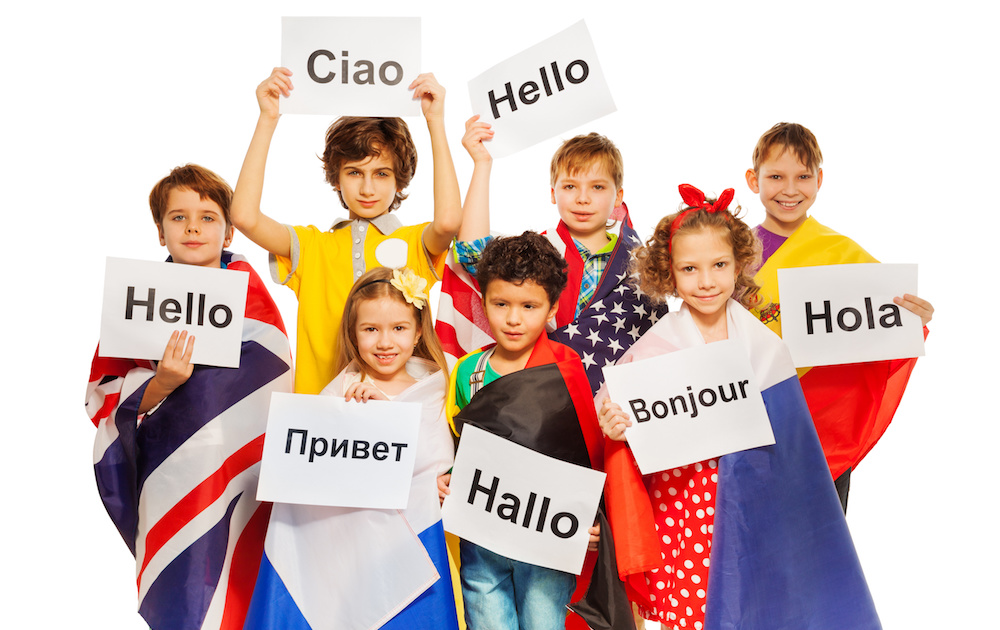
For many years now, there have been calls for Australians to learn languages, particularly Asian languages, as the world economy pivots to the Asia-Pacific. But the number of students learning languages in Australia has remained stubbornly low.
Rapid improvements in machine translation and speech recognition technologies in recent years appear to offer an easy way out. While problems still arise, the use of AI has led to remarkable improvements in the quality of Google translations, and increasingly accurate speech recognition technologies are now widely available.
Drawing these two technologies together, Google has announced the upcoming launch of wireless headphones that feature real-time language translation. With the advent of these technologies, do we still need to learn other languages?
These are exciting times. Technological advancements are enabling us to communicate with people all around the world without needing to have a common language. So I can now use such devices to communicate with speakers of Chinese, Hungarian or Hindi. They will hear my speech translated into their language; they can speak back to me in their language; and I will have this translated into English for me in real-time. But the ability to communicate in one’s own language with speakers of other languages, without having any knowledge of how languages work or cross-cultural differences in the ways we communicate, opens up a can of worms.
For a start, linguists tell us that word meanings don’t always match across different languages. What goes in is sometimes not the same as what comes out.
US President Donald Trump’s attempts to communicate with the wider world are instructive in that respect. Earlier in the year, it was reported that Trump told a European Commission meeting that “the Germans are bad, very bad”. This caused much consternation in the German media, as they debated whether Trump meant the Germans are “böse” (which has connotations of evil, malicious intent) or “schlecht” (meaning they are not doing the right thing).
This is not simply a problem of mistranslation. The point is that word meanings don’t match up precisely across languages. This has important implications for international business and relations, but it’s something that is masked if we take translations at face value.
Another basic feature of communication is that we generally mean much more than we say. Although language plays an important role in communication, very often what is implied or left unsaid is more important than what is said. These inferences are not easily managed in machine translation, because they differ across speakers and cultures.
A good example of this is that it’s common among speakers of (Mandarin) Chinese to first refuse an offer of food when visting someone’s house, especially if one isn’t that close. Such refusals are a way of testing the waters as to whether the offer is genuine. Accepting an offer too quickly may also be regarded as impolite. Offers and refusals are therefore often repeated before guests finally accept.
The point is that different cultures prefer different ways of speaking, and that means we do things through languages in different ways. These different ways of speaking give rise to different inferences depending on the language in question.
New technologies will no doubt change how which we approach the learning of languages in exciting ways, just as the way we learn maths changed when calculators became readily available. But we can’t outsource deep cross-linguistic and cross-cultural knowledge to apps, and the need to learn languages hasn’t changed.
Indeed, it seems to be on the rise as we enter an increasingly globalised economy. According to a report on “The New Work Order” by The Foundation for Young Australians, advertisements for jobs requiring bilingual skills grew by 181% from 2012 to 2015. And a report by the Institute for the Future in Palo Alto, California, on “Future Work Skills 2020” identifies cross-cultural competency as one of ten key skills for the future workforce.
Learning languages allows us to experience different ways of thinking. It enables us to develop the ability to change our perspective on what is going on in any particular interaction, and to adapt ourselves to the mindsets of others. It also helps us to understand ourselves better and our own mindsets. Real cross-cultural understanding helps us build deeper relationships.
No matter what advances we make in machine translation or speech recognition, technology cannot change the fundamental nature of human languages and their role in communication. While such technologies are an increasingly useful tool, they can no more replace the deep cross-cultural knowledge that comes with learning languages than the advent of calculators meant we no longer needed to learn maths.
However, such technologies are now widely accessible. The upshot is that developing an awareness of differences between languages and the ways in which they underpin key cross-cultural differences is something that every Australian will have to develop. Rather than making the need for learning languages redundant, we are in fact entering a world in which awareness of differences across languages and cross-cultural competence is a must for all.
![]() This article was written by Michael Haugh, Professor of Linguistics and Head of School of Languages and Cultures, The University of Queensland. The piece first appeared on The Conversation.
This article was written by Michael Haugh, Professor of Linguistics and Head of School of Languages and Cultures, The University of Queensland. The piece first appeared on The Conversation.







